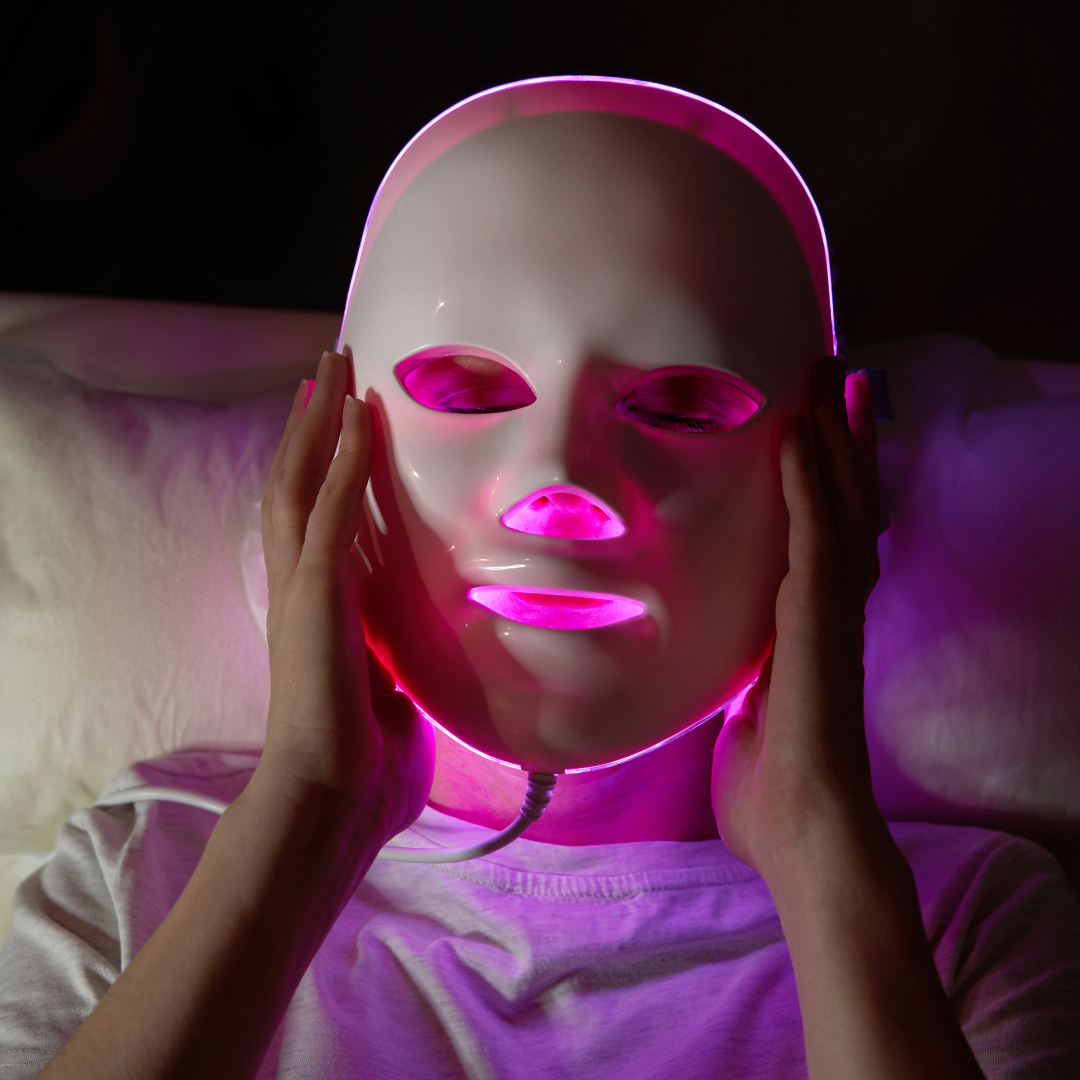Acne is one of the most common skin conditions and affects millions of people both physically and psychologically. In addition to being a cosmetic challenge, acne can affect self-confidence and quality of life. Many people are looking for effective solutions to improve skin health and reduce breakouts, and one innovative treatment that has gained increased attention is LED light therapy.
This technology uses specific light waves to fight acne, reduce inflammation, and improve skin condition. In this article, we take a closer look at the causes of acne, how it affects the skin, and how LED light therapy can be an effective treatment method.
What is acne?
Different types of acne
Acne is a chronic skin condition that occurs when the sebaceous glands produce too much oil (sebum), leading to clogged pores and inflammation. The most common types include:
- Cystic acne – Large, painful pimples under the skin, often with scarring.
- Hormonal acne – Influenced by hormonal changes, such as during adolescence, menstruation, or pregnancy.
- Comedonal acne – Blackheads and white comedones, often non-inflammatory.
Understanding what type of acne you have is important in choosing the right treatment.
What causes acne?
Acne can be triggered by several factors, including:
- Hormonal changes – Increased production of hormones such as testosterone can stimulate sebum production.
- Diet – Studies show that sugar and dairy products can worsen acne (Harvard TH Chan School of Public Health, 2023).
- Stress – Increases cortisol levels, which can trigger inflammation and sebum production.
- Improper skin care – Some skin care products can clog pores and worsen acne.
Myths about acne
-
"Acne is caused by poor hygiene."
- Excessive washing can irritate the skin and worsen the condition.
-
"The sun helps with acne."
- The sun may provide a temporary improvement, but can also lead to dehydration and increased sebum production.
-
"Diet has no impact on acne."
- Recent research suggests that certain foods, especially those with a high glycemic index, may worsen acne (American Academy of Dermatology, 2023).
Skincare routine for acne-prone skin
A consistent skin care routine can help reduce acne and improve skin condition:
- Gentle Cleanser – Use a mild, non-comedogenic cleanser morning and night.
- Moisture – Choose a light moisturizer to balance sebum production.
- Exfoliation – Regular use of BHA or AHA can remove dead skin cells and prevent clogged pores.
- Sun protection – UV rays can worsen inflammation and cause age spots.
LED light therapy for acne
What is LED light therapy?
LED light therapy is a treatment that uses specific light waves to stimulate skin cells and reduce inflammation. It is a non-invasive method that can help to:
- Kill acne bacteria
- Reduce redness and inflammation
- Promote the skin's natural healing process
What colors of light help with acne?
- Blue Light – Kills acne bacteria and reduces oil production.
- Red light – Stimulates collagen production, reduces inflammation and accelerates healing.
- Yellow light – Improves skin elasticity and soothes sensitive skin.
Research published in the Journal of Clinical and Aesthetic Dermatology shows that regular use of blue and red LED light can reduce acne by up to 70% after a few weeks of treatment.
Order your LED Silicone Mask today to start your LED light treatment.
How to use LED light therapy effectively?
Choosing the right LED device
When investing in an LED device for home use, you should look for:
- Correct wavelength – Blue light (415 nm) for acne, red light (630 nm) for inflammation.
- FDA approval – Ensures the device is safe and effective.
- User Reviews – Read reviews to find a device that delivers good results.
Recommended use
- 2-3 times per week
- 10-20 minutes per session
- Visible results may take 4-8 weeks
Possible side effects and precautions
LED light therapy is generally safe, but some people may experience:
- Slight redness
- Dry skin
- Increased photosensitivity
People taking photosensitizing medications or who are pregnant should consult a dermatologist before use.
Conclusion
Acne is a challenging skin condition, but modern treatments like LED light therapy offer new options for those seeking clearer skin. When used correctly, LED light can reduce acne breakouts, reduce inflammation, and improve overall skin health.
Consider LED light therapy as part of your skincare routine and experience the benefits of this innovative treatment.
Order your LED Silicone Mask today to start your LED light treatment.
Sources
- Harvard TH Chan School of Public Health. (2023). "Diet and Acne: What the Science Says."
- American Academy of Dermatology. (2023). "The Link Between Diet and Acne."
- Journal of Clinical and Aesthetic Dermatology. (2022). "The Effectiveness of LED Therapy in Acne Treatment."






